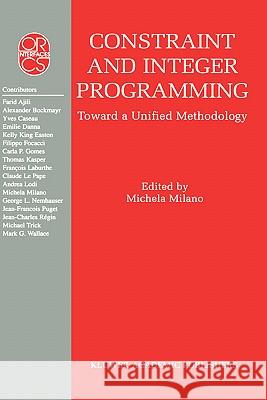Constraint and Integer Programming: Toward a Unified Methodology » książka
Constraint and Integer Programming: Toward a Unified Methodology
ISBN-13: 9781402075834 / Angielski / Twarda / 2003 / 370 str.
Constraint and Integer Programming: Toward a Unified Methodology
ISBN-13: 9781402075834 / Angielski / Twarda / 2003 / 370 str.
(netto: 549,49 VAT: 5%)
Najniższa cena z 30 dni: 574,29 zł
ok. 20 dni roboczych.
Darmowa dostawa!
Despite differing origins, constraint programming and mathematical programming are beginning to merge. Constraint programming has grown out of the logic programming community as part of an effort to embed constraints in a programming language. Mathematical programming, a much older field, is rooted in the mathematics of optimization. Because these two areas have complementary strengths, there are ongoing efforts to integrate the two.Constraint and Integer Programming presents some of the basic ideas of constraint programming and mathematical programming, explores approaches to integration, brings us up to date on heuristic methods, and attempts to discern future directions in this fast-moving field.
Constraint and Integer Programming is organized as follows: Chapter 1 is a high level overview of the main concepts of Constraint Programming (CP) and Integer Programming (IP) used in the book. Chapter 2 informally introduces integration methods describing and classifying the main works in the field. Chapter 3 outlines a unifying framework which involves the main concepts of CP and IP, underlining similarities and differences, and stating the basis for possible integrations. Chapter 4 describes global constraints as a vehicle for integrating IP concepts in CP in a transparent way for the user. Chapter 5 presents various ways to integrate relaxations in Constraint Programming focussing on global constraints. Chapter 6 presents hybrid solvers and Chapter 7 outlines Column Generation and its integration in Constraint Programming. Chapter 8 examines randomization and problem structure as a basis for understanding the intrinsic difficulty of the combinatorial problems. Chapter 9 studies the use of local search and meta-heuristics in CP. Chapter 10 is devoted to open perspectives and future directions.











